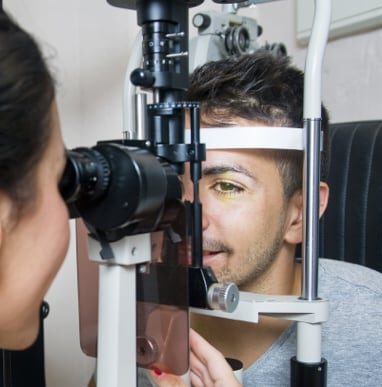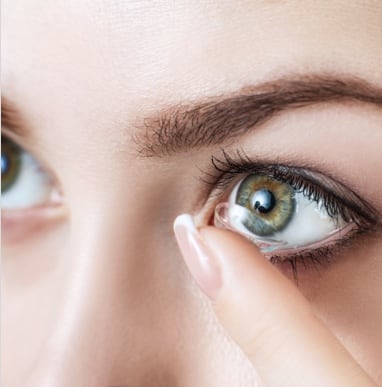
With summer just around the corner, a lot of us are probably looking forward to getting a lot of sun.
However, it’s important to be careful not to expose our eyes (or our skin) to too much ultraviolet radiation, as it can cause a number of problems both in the short-term and the long-term.
What Are UV Rays?
The sun gives off three types of ultraviolet radiation: UVA, UVB, and UVC. UVC is the most dangerous type, but only astronauts really need to worry about them because most of them are absorbed by the ozone layer before they can reach us.
UVB rays aren’t as strong as UVC, but they can get past the ozone layer and down to us, where they can damage our corneas (the clear layer at the front of our eyes) with too much exposure. While weaker, UVA rays penetrate farther than UVB, which makes them more capable of reaching the retina at the back of the eye.
Short-Term UV Vision Problems
Hopefully we all know better than to look directly at the sun, but simply being outdoors for several hours on a sunny day can mean enough UV exposure to cause a condition called photokeratitis. Essentially, this is a sunburn of the surface of the eye, with symptoms like redness, blurred vision, light sensitivity, and tearing.
In the winter, you might hear of photokeratitis as “snow blindness,” but you could just as easily experience it after a day on the beach without sunglasses. Photokeratitis is usually temporary, and you can use artificial tears and cold compresses to ease the discomfort.
UV Vision Damage Over Time
UV exposure also has a cumulative effect over the course of our lives, such as increasing the risk of developing sight-threatening conditions like cataracts and macular degeneration.
Two other conditions we are more susceptible to due to UV exposure are pinguecula and pterygium, more commonly known as “surfer’s eye.” Pinguecula occurs when a white or yellow bump forms in the conjunctiva that covers the whites of our eyes. Pterygium is an overgrowth of clear tissue from the white of the eye towards the iris.
Protecting Your Eyesight
Fortunately, we can do a lot to protect our eyes if we just follow a few simple tips:
- Always wear sunglasses outside during the day, and make sure they block 100 percent of UVA and UVB rays.
- Wear wide-brimmed hats to provide additional shade.
- Avoid exposure to sunlight during the brightest hours of the day (between 10 a.m. and 4 p.m.)
How Long Has It Been Since We Saw You?
If you have any questions about UV rays and how to protect your eyes from them, if it’s been a while since your last eye exam, or especially if you’ve noticed any changes in your vision, don’t hesitate to schedule your next appointment with us!












